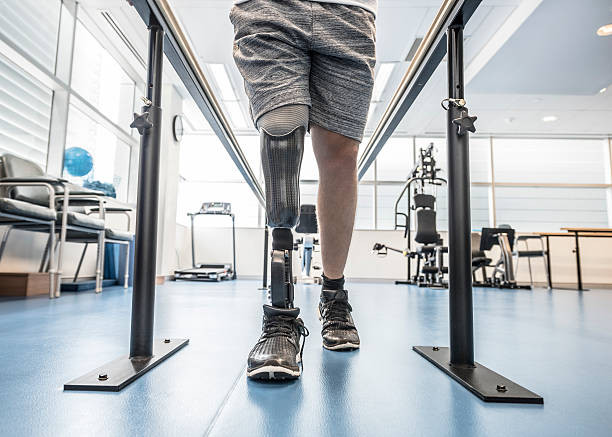Social Disability Lawyer Blog
Medical Evidence Required for Your SSDI Application for Amputation
A medical emergency that involves the removal of a section of your body is a devastating and life-changing occurrence. Amputation, whether due to an accident, illness, or another condition, requires significant modifications in your life.
While some people may live relatively healthy lives, others will be unable to work or function as they once did. Fortunately, the Social Security Disability Insurance (SSDI) programme was established to assist people like you who have been incapable as a result of the need for an amputation.
Not everyone who applies for SSDI for an amputation will be granted financial support. In reality, the great majority of amputation sufferers will be denied SSDI benefits.
The Importance of the "Blue Book"
The Social Security Administration (SSA) uses the Blue Book, a medical reference, to determine if a sickness, such as amputation, is severe enough to earn disability benefits. The requirements you must satisfy in order to be accepted for an amputation are listed in Section 1.05 of the Blue Book.
However, many persons who require amputations have other comorbidities, such as vascular disease. You could also be evaluated based on the criteria for the disease that caused the amputation, such as a severe infection due to exacerbated or uncontrolled blood glucose levels, underlying diabetes/kidney issues, etc.
The most crucial medical evidence that you will need to submit to give you the best chance of being awarded SSDI is listed below to aid you in gathering information.
Working with your health care providers to verify that you have completed all of the SSA-required medical tests and that all of your medical documentation is in order is crucial.
Medical Evidence Required for Your SSDI Application for Amputation
In general, the more information you submit on your application, the more probable it is that you will be accepted. This involves a comprehensive evaluation of your medical history, test findings, and even therapy history. Copies of the following documents should be made:
- - X-rays: This is the most commonly utilised kind of evidence to identify the location and extent of an amputation.
- - Blood tests and tissue samples: For patients who suffer difficulties from their amputation, this is the most straightforward approach to detect further problems.
- - CT and MRI scans can also assist in determining what issues impede a person from walking or utilising a prosthesis.
- - General medical history: Include doctor's documents detailing your disease since the start of your medical difficulties, as well as any testing that may reveal underlying illnesses that led to your amputation.
- - Physical treatment notes: Notes from your therapist on your growth following an amputation may be helpful in establishing your ability for work and self-care by Social Security.
In short, you must be able to provide sufficient medical documentation/records to prove the following (all that apply):
- - Which limbs have had to be amputated?
- - Any usage of assistance aids, such as two canes, two crutches, a walker, or a wheelchair, is necessary.
- - Any movement-related discomfort you are experiencing
- - Your capacity to ambulate up and down stairs, including whether or not a railing is required.
- - Your ability, or lack thereof, to travel to and from work or school without a companion. Any difficulties you have grocery shopping, banking, using public transportation, preparing a meal, feeding yourself, showering, etc.
- - Any incapacity to successfully ambulate, such as walking adequate distances at a tolerable rate.
If you are unsure if your problems will help you qualify for assistance, you should also ask your doctor for an RFC test.
These tests evaluate a person's ability to do daily actions including walking, sitting, standing up, pushing, pulling, lifting, or bending. Also, your DE will analyze whether you are able to take up any unskilled, semi-skilled or skilled work post-amputation.
If you are unable to do these responsibilities efficiently, the Social Security Administration may declare you unable to work and yet be eligible for benefits under a special regulation called as a Medical Vocational Allowance.
For more information, you can seek legal help from our expert disability attorneys at the Law Office of Irene Ruzin.
When you subscribe to the blog, we will send you an e-mail when there are new updates on the site so you wouldn't miss them.

Comments